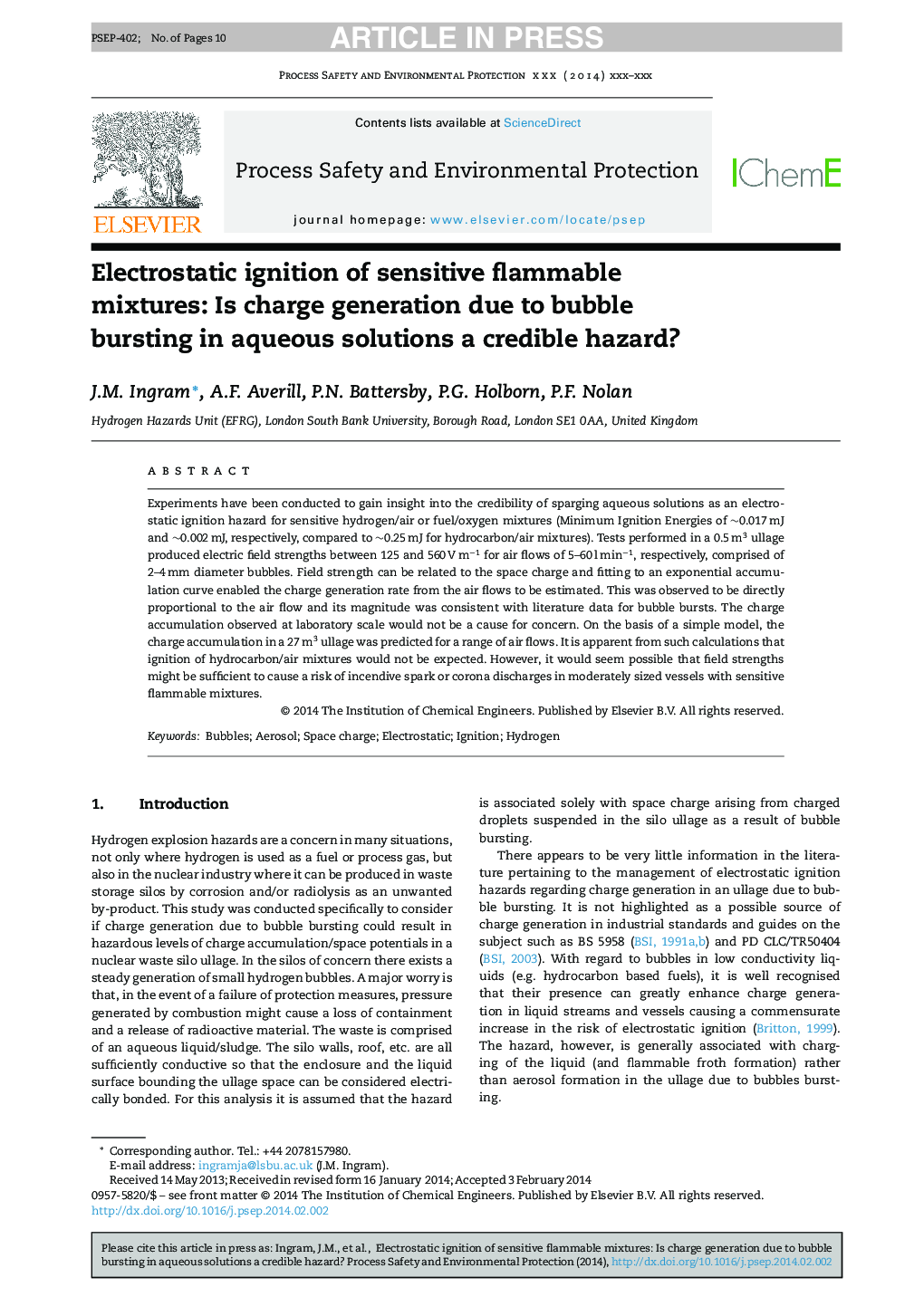| Article ID | Journal | Published Year | Pages | File Type |
|---|---|---|---|---|
| 10373919 | Process Safety and Environmental Protection | 2014 | 10 Pages |
Abstract
Experiments have been conducted to gain insight into the credibility of sparging aqueous solutions as an electrostatic ignition hazard for sensitive hydrogen/air or fuel/oxygen mixtures (Minimum Ignition Energies of â¼0.017 mJ and â¼0.002 mJ, respectively, compared to â¼0.25 mJ for hydrocarbon/air mixtures). Tests performed in a 0.5 m3 ullage produced electric field strengths between 125 and 560 V mâ1 for air flows of 5-60 l minâ1, respectively, comprised of 2-4 mm diameter bubbles. Field strength can be related to the space charge and fitting to an exponential accumulation curve enabled the charge generation rate from the air flows to be estimated. This was observed to be directly proportional to the air flow and its magnitude was consistent with literature data for bubble bursts. The charge accumulation observed at laboratory scale would not be a cause for concern. On the basis of a simple model, the charge accumulation in a 27 m3 ullage was predicted for a range of air flows. It is apparent from such calculations that ignition of hydrocarbon/air mixtures would not be expected. However, it would seem possible that field strengths might be sufficient to cause a risk of incendive spark or corona discharges in moderately sized vessels with sensitive flammable mixtures.
Related Topics
Physical Sciences and Engineering
Chemical Engineering
Chemical Health and Safety
Authors
J.M. Ingram, A.F. Averill, P.N. Battersby, P.G. Holborn, P.F. Nolan,
